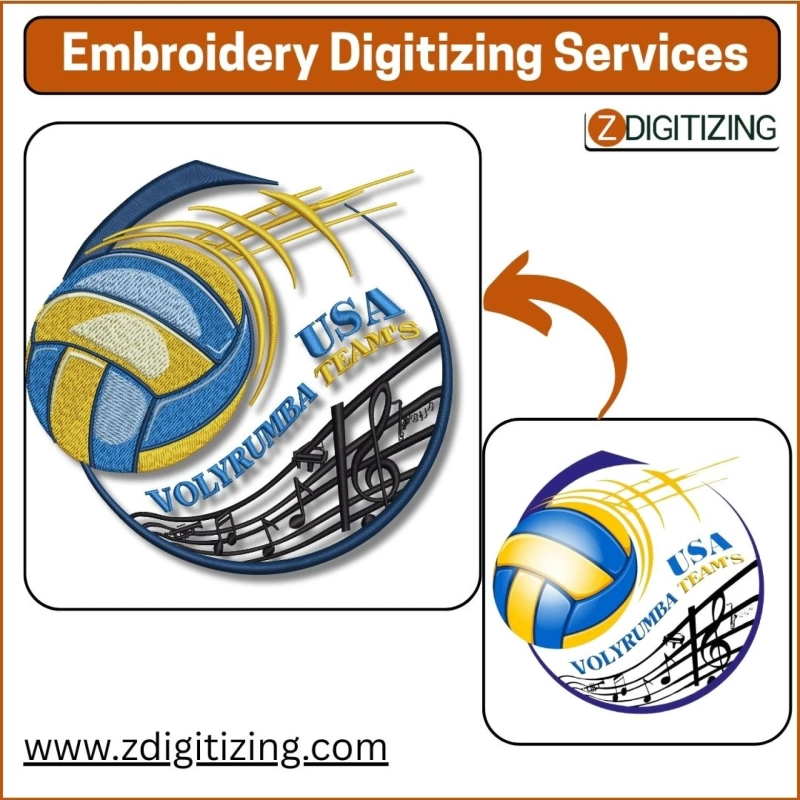The quality and durability of an embroidered design are determined by a critical technical process known as embroidery digitizing. This foundational step translates a digital artwork into a precise set of instructions that an embroidery machine can execute. For any business involved in custom apparel, branding, or promotional products, understanding this process is essential for achieving professional-grade, repeatable results.
Embroidery digitizing functions as the blueprint for the final stitched product. It is a detailed, technical procedure that dictates the outcome of the embroidery long before any fabric is hooped or a needle is threaded.
Defining the Process of Embroidery Digitizing
At its core, embroidery digitizing is the manual process of converting a graphic file (such as a JPG, PNG, or vector file) into a specialized stitch file. This is a common point of misunderstanding; it is not a simple, automated file conversion. Instead, it is a skilled task performed by a technician, or digitizer, who uses specific software to reconstruct the design stitch by stitch.
The digitizer makes a series of expert decisions on how each element will be rendered in thread. They plan the needle's path, select appropriate stitch types, and make adjustments for the physical properties of thread and fabric. The final output is a machine-readable file (in a format like .DST or .PES) that directs the embroidery machine’s every movement.
Key Technical Elements of a Professional Digitized File
The final appearance of an embroidered item is almost entirely dependent on the quality of the digitized file. A poorly prepared file will lead to production issues and an unprofessional result. A professional digitizer focuses on the following technical components.
Strategic Stitch Selection and Application: Different parts of a design require specific stitch types to be rendered correctly. A digitizer will use a satin stitch for smooth, raised borders and lettering, while a fill stitch is used to cover larger areas of color. The properties of a fill stitch, such as its angle and pattern, can be manipulated to create different textures. A running stitch is reserved for fine details and outlines.
Efficient Pathing and Sequencing: The "pathing" is the sequence in which the machine sews the design. An expert digitizer plans the most logical and efficient route for the needle to travel. This minimizes the number of trims and jumps, which not only speeds up production but also reduces unnecessary tension and pulling on the garment, resulting in a cleaner final product.
Foundational Stitches: Underlay and Density: Before the main stitches are applied, a digitizer programs an underlay. This is a base layer of stitches that stabilizes the fabric and prevents the top stitches from sinking in. This foundation works in tandem with stitch density the spacing between stitches. The density must be carefully calculated; if it is too high, the design will be stiff and cause the fabric to pucker, and if it is too low, the material will show through.
Precision Adjustments for Fabric Distortion: During sewing, the tension from the thread naturally causes the fabric to pull inward slightly. A skilled digitizer anticipates this physical distortion and applies pull compensation, which involves making certain shapes in the digital file slightly wider. This technical foresight ensures that once the design is sewn, all elements align perfectly without any gaps.
The Impact of Digitizing Quality on Production Outcomes
Using a low-quality or auto-digitized file is a significant risk in a production environment. It often leads to costly errors, including wasted materials, frequent thread breaks, and finished products that do not meet quality standards. Investing in professional, high-quality digitizing is the most critical step in ensuring a project's foundation is solid, leading to a clean, durable, and accurate embroidered product.



